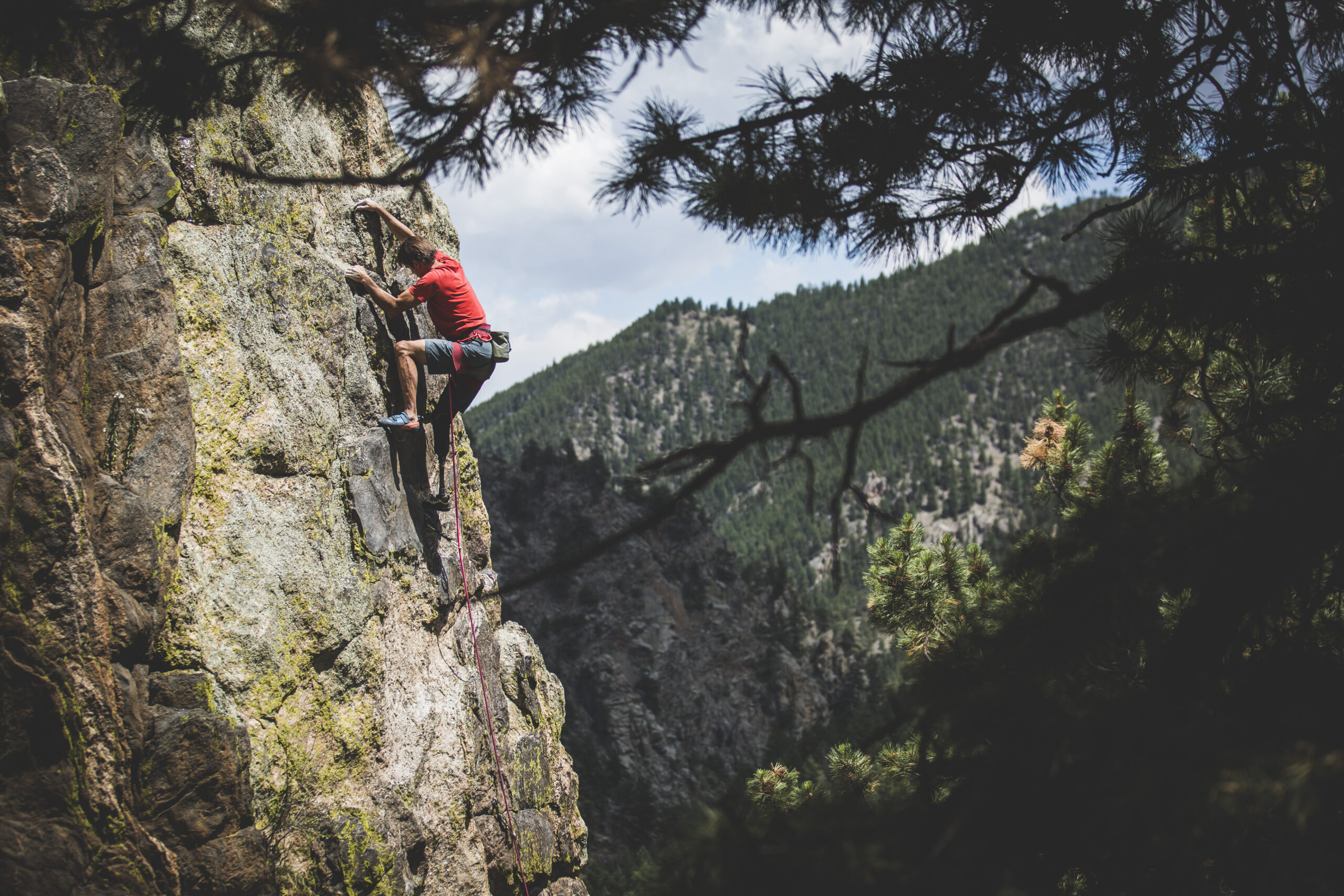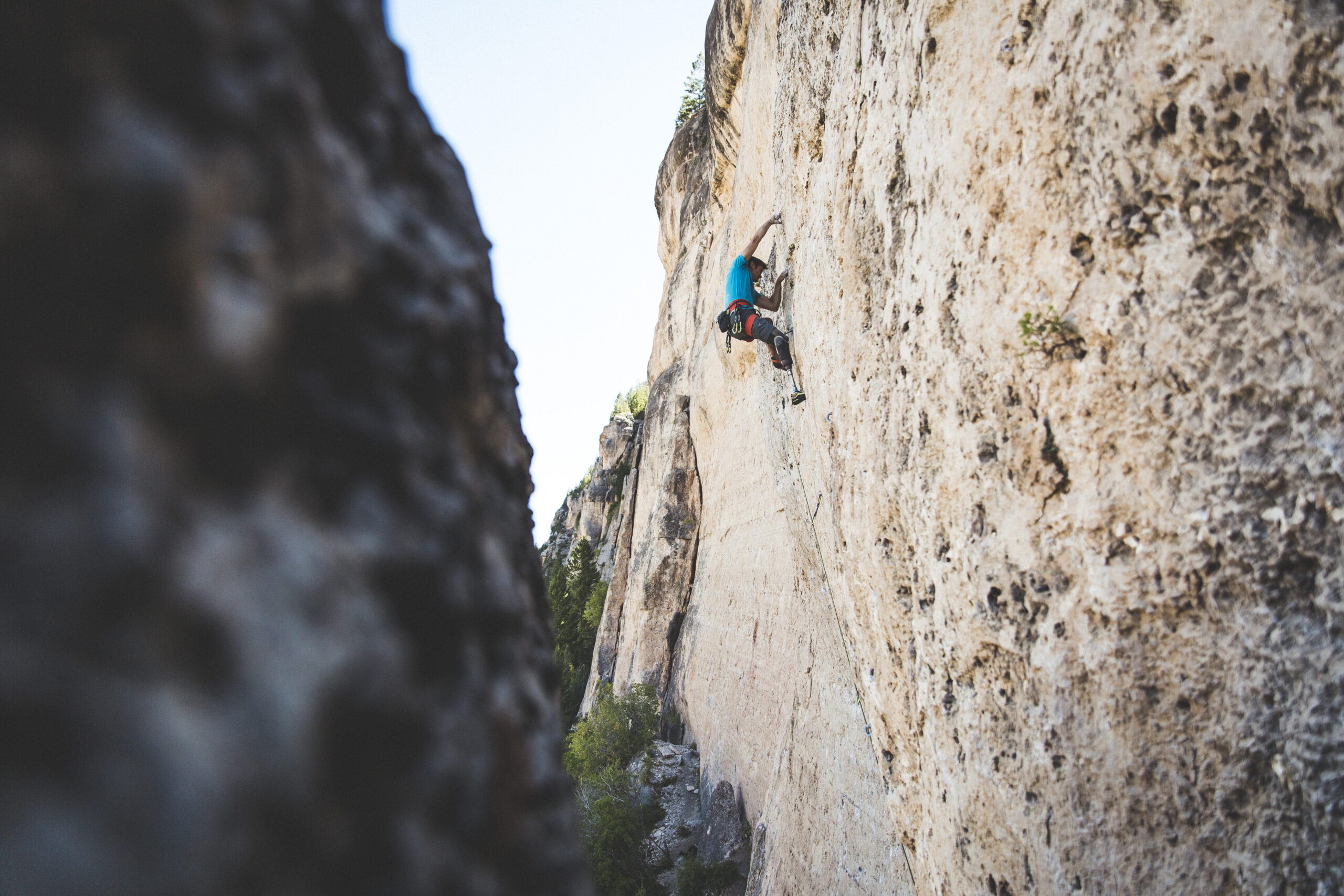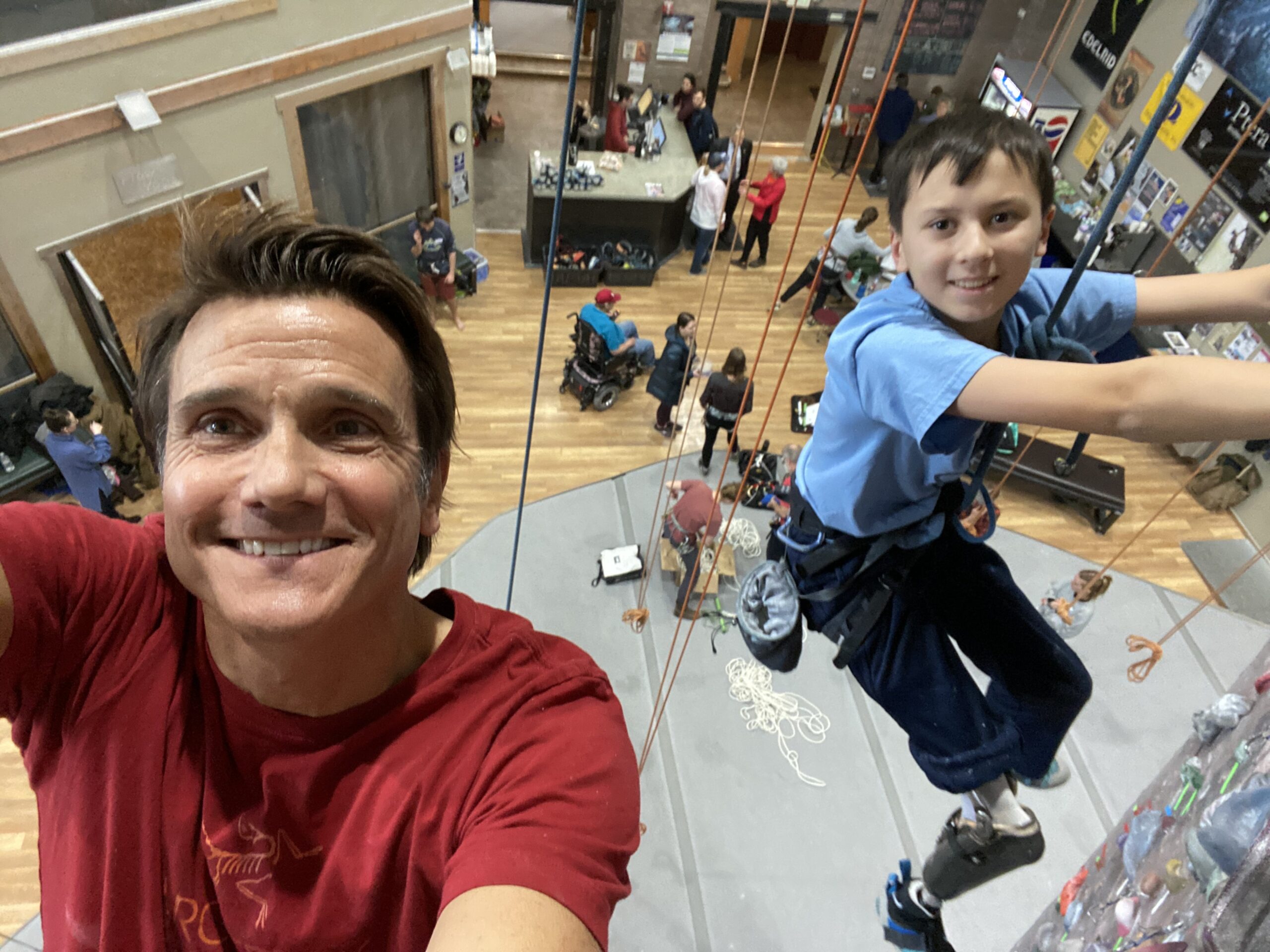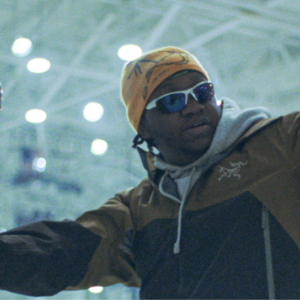Craig Demartino and Adaptive Adventures

The initial reports from the base of the climb indicated an unsurvivable accident. At the hospital, emergency doctors projected the severely injured climber wouldn’t last the hour. His wife signed piles of dire paperwork in anticipation of the worst.
Five days later, four of which were on a ventilator, Craig DeMartino had not only survived, but improved enough to leave the ICU. He’d refused to give in and flipped the medical prognosis on its head. Neurosurgeons and orthopedists rushed to do damage control and patch him back together.
A miscommunication with his climbing partner had resulted in Craig being dropped from an anchor when he expected a belay. The Loveland, Colorado-based climber fell about 100 feet, knocking into a tree on the way and landing upright. This position likely saved his life, but his heels, ankles, and tibia-fibula bones on both legs were shattered, and a lower leg artery severed. He pulverized L2 and broke C5 and C6 in his spinal cord, broke his right ribs, punctured his right lung, tore the right shoulder labrum, and burst the right elbow bursa sacs. Eighteen months after the accident, Craig had his lower right leg removed about 8 inches below the knee.

That’s partly because, despite thinking he’d never return to climbing — mentally or physically – Craig was back on the rock. He had tagged along on a post-accident family trip, to hang out while his wife, Cyndy, also a dedicated, talented climber, and their two small children. When his then 6-year old daughter Mayah looked at her dad and asked if he was going to climb the 5.8 she’d just finished, he had to try. “It was a horrible experience,” says Craig.
 It took me 45 minutes to climb a 30-foot pitch. And then when I got to the anchor, I was terrified.
It took me 45 minutes to climb a 30-foot pitch. And then when I got to the anchor, I was terrified.
Cyndy coached him through the fear and a safe, secure belay to the ground, where Craig realized he still loved climbing: he missed the wind, the rocks, the smells, even the feel of chalk and the discomfort of climbing shoes. He climbed again here and there, slowly besting his fear. Nonetheless, his fragile, painful lower right leg would never heal properly. Craig opted to have it removed below the knee – leaving the optimal amount of bone to fit a climbing prosthetic.
He threw himself back into the sport. In 2006, four years after the 2002 fall, Craig went to Yosemite to climb El Capitan (Lurking Fear, 5.7 – 5.13c, 13 hours) with the help and encouragement of climber Hans Florine. He eventually returned to El Capitan various times, including the first all-adaptive ascent in 2012 via Zodiac with fellow amputees Jarem Frye and Pete Davis.

The impacts of Craig’s accident on the climbing world didn’t stop with his personal accomplishments. In 2007, Craig was invited by a friend to help introduce six veterans with various amputations to climbing. “I didn’t want to go, but [my friend] just said, ‘I’ll see you Saturday,’” remembers Craig.
 And it completely changed my outlook, we helped these guys get their lives back. They were so jazzed, it was amazing. And that’s how I got into helping others.
And it completely changed my outlook, we helped these guys get their lives back. They were so jazzed, it was amazing. And that’s how I got into helping others.
That fortuitous event opened a whole new world and profession for Craig. But it’s also his innate, positive outlook that’s made him a perfect fit: an incredibly upbeat individual who understands exactly what other adaptive athletes are facing. “I tell everyone, I’m going to take you rock climbing, so, if you can do that, you can probably do a lot of things people have been telling you you can’t do,” he says, with palpable glee in his voice.
Today, Craig is part of of the Arc’teryx athlete team, where he was brought on as a climber in 2010. In 2016, he joined Adaptive Adventures, a Colorado-based non-profit that introduces adaptive athletes nationwide to outdoor sports, where Craig is the heart and soul of their climbing program. “[Climbing] is my full-time job now, I work about 50% of the time as an athlete, and 50% as an adaptive trainer,” says Craig, before adding with a chuckle, “I always wanted to be a pro climber – it’s just come about in a completely different way.”

Adaptive Adventures (AA) focuses heavily on veterans. As a non-profit, much of their funding comes from the U.S. Veteran’s Affairs Department (VA), because research supports the positive benefits of sports and outdoor adventure for veterans. But about 45% of people served are civilians, so AA must fundraise from other sources, which includes being a recent recipient of the Arc’teryx $25,000 Do Right grant.
“Adaptive Adventures originated to provide opportunities to engage individuals in adventure sports,” said Chelsea Elder, executive director of the organization. “We want them and their families to learn to experience adventures, regain independence, and socialize with others with similar life experiences. We are a large provider of adaptive sports to VA medical centers. Craig works a lot with people suffering post-traumatic stress disorder (PTSD); climbing is a beautiful tool for lessening that.”
“What I see, veteran or not, is a person who goes through a lot of trauma kind of loses their identity” says Craig. “When people come out with me, they realize they are still a human being, like, ‘I am not the same person, but I can enjoy life.’ I’ve had vets say to me, ‘I haven’t done anything since I got out of the military.’ I had one guy say he hadn’t left the house in two years, because of PTSD. And next, you see the love of the sport happen, and the love of the natural world.”

The organization focuses on underserved areas of the U.S., such as inner city urban and very rural areas. Craig gets his budget for the year, researches where he should go, and makes his plans. “I am the program – but then I help train veterans to be mentors, and climbing gym staff in these communities so they can keep doing it on their own. We introduce them, we set the hook, we buy the adaptive gear for the gym, and then, we can use some of our grant to buy a year of climbing gym membership for those who are interested, so money isn’t a hurdle. We are taking away barriers, not creating them.”
In many underserved communities, Craig tries to reach out to any interested person. AA opens doors for the adaptive athlete, but, Craig never misses a chance to enrich any potential climber’s life with an introduction to the sport.
He tells a story of a climbing gym in a bad neighborhood in Cleveland, where, in addition to the veterans they’d recruited, the gym owner had a BBQ to bring other neighbors in.
 People were like, ok, I’ll come eat a hot dog and listen to this idiot with one leg talk – and then suddenly, they’re interested in climbing!
People were like, ok, I’ll come eat a hot dog and listen to this idiot with one leg talk – and then suddenly, they’re interested in climbing!
This, to Craig, is success, any way you can get it: showing everyone climbing exists, it’s accessible, and they can do it.









